How the US Empire Was Made in North Korea
IN FOCUS, 22 May 2017
Niall Bradley | Signs of the Times – TRANSCEND Media Service
6 May 2017 – Over the past 15 years, fighting-talk has periodically flared over ‘what to do about that crazy Asian dictator’ in North Korea. Today’s round of brinkmanship by the US/Western ‘deep state’ against North Korea will – in all probability – unfold the same way as in previous episodes; it will fizzle out. China is a guarantor of North Korean security, so the US will not go to war with North Korea. Period.
The battle between Trump and the Washington Crazies for control of the reins of empire continues, however, and the ‘Krazy Korean’ is relevant to that. I hope to get to that in a later article, but in the meantime, take note of the contradictory messages coming from the US. One minute, US Navy battle-groups are ‘en route to North Korea’; the next they’re heading in the opposite direction. One minute, THAAD missile systems are ‘installed and operational in South Korea’; the next, Trump wants South Korea to pay for them. One minute, someone on the US National Security Council is telling NBC News that the US is considering ‘decapitating the North Korean regime’; the next, Trump announces he’d be honored to meet Kim Jung Un… All of which has provoked the South Korean and Japanese governments to denounce Trump’s confusing and contradictory statements. Is there a method in Trump’s apparent madness?
I recently read The China Mirage: The Hidden History of American Disaster in Asia by James Bradley, a breathtaking panorama of US and Chinese trajectories from the Opium Wars in the mid-19th century to the birth of ‘Communist’ China and ‘Pax Americana’ a hundred years later. This naturally encompassed US involvement in Korea, so in this article I’d like to share some historical context that is either incomplete or missing from summaries of US-Korean relations I’ve seen online so far.
The US has a long history of propping up crazy Asian dictators – from imperial Japan to ‘Christian’ Chiang Kai-shek in ‘New’ China to Catholic Diem in the short-lived US invention of South Vietnam. ‘North’ Korea is similarly a US invention. After existing for hundreds of years as a sovereign country, Korea fell under Japanese imperial influence in the late 19th century. The Japanese had by then become the ‘Yankees of the Far East’ and so accepting were they of civilized Western ways (and Anglo-Saxon values in particular), that the US and British empires were able to convince the Japanese that they should expand their empire as a check against Russian economic expansion in the Far East and as a vehicle through which to ‘Americanize’ China and the wider region.
In 1882, the US signed a treaty with the Emperor of Korea, declaring that there “shall be perpetual peace between Korea and the US.” If Korea was ever threatened by a third party, the US would intervene on its behalf. In the East, such commitments are both legally and morally binding. Not so in the West, however. Behind Korea’s back, then-US president Theodore Roosevelt (whose family, like all the US patrician families, got rich illegally smuggling opium into China), gave Japan the green light to take over Korea in 1905 (under the fabricated pretext that if they didn’t, the Russians would beat them to it) and use it as a staging ground to launch war on Russia. Bradley recounts this treachery in The China Mirage:
In March of 1905, when wave after wave of Japanese soldiers ran directly into Russian bullets during Japan’s victory at the Battle of Mukden, Roosevelt wrote, “The Japanese are the most dashing fighters in the world!” For the first time in modern history, an Asian country was besting a white Western Christian country. Roosevelt wrote [Baron] Kaneko [Japanese envoy to the US] on White House stationery, “Judging by the state of affairs, all is going well and your army is advancing at full speed and power. Banzai!!” When the baron later arrived at the White House for a celebration of the Mukden victory, Roosevelt’s “face shone with joy over the unprecedented victory.” After his chat with Kaneko, Roosevelt told Secretary of War William Howards Taft, “I heartily agree with the Japanese terms of peace, insofar as they include Japan having the control of Korea.” [p.72]
Korea found few advocates. John ford, the secretary of the American Asiatic Association, a major trade group, defended Japan’s takeover of Korea because “the true peril of Asia and of the world is the Muscovite, and not the yellow peril.”
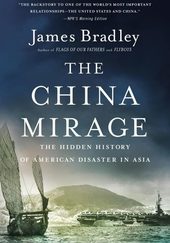 The ‘yellow peril’ refers to the late 19th century realization in Anglo-American power circles that – sooner or later – the vastly more populous East Asia would industrialize and eclipse their Western-led global domination. And yet, it wasn’t that which frightened them most – it was imperial Russia, a fear that echoes down to the present time.
The ‘yellow peril’ refers to the late 19th century realization in Anglo-American power circles that – sooner or later – the vastly more populous East Asia would industrialize and eclipse their Western-led global domination. And yet, it wasn’t that which frightened them most – it was imperial Russia, a fear that echoes down to the present time.
Thus began Korea’s descent into hell, and Japan’s imperial march across the region. Only later would the US have a problem with this; at the time, Japan was being encouraged to apply a ‘Japanese Monroe Doctrine for Asia’ by Roosevelt – a doctrine that was guaranteed – financially, militarily and politically – by the Anglo-Americans. The Japanese occupied Korea, Nazi-style, for the next 45 years, during which time they also invaded and occupied Manchuria, northeast China, in 1931. They then spread further southwards into China in 1937, slaughtering millions of people as they went (35 million, according to Chinese sources).
By the time WW2 broke out, the Japanese war machine was heavily reliant on Californian oil, which then-US president Franklin Roosevelt (cousin of the first Roosevelt) was loathe to choke off for fear the Japanese would declare war against the US at a time when it was focused on the situation in Europe. To hedge its bets, imperial Japan spread further south into Indochina and Indonesia to take over oil fields and other raw materials.
And that’s where it crossed the Anglo-Americans’ red line: the Japanese were eyeing up key resources in Western colonies. In a move they knew would collar Japan’s regional ambitions, and thus likely be interpreted by the Japanese as a declaration of war, the so-called ‘wise men’ around Roosevelt (who we might today recognize as actors of the ‘deep state’) went behind his back to embargo oil shipments to Japan, which hadn’t yet secured much-needed resources in South-East Asia, triggering its decision to attack the US Pacific Fleet at Pearl Harbor in Hawaii. There is some debate as to whether or not Japan’s surprise Pearl Harbor really surprised the Americans, but in any event, history records that once the US military entered the west Pacific, it planned to stay there.
While the rest of the world celebrated the end of the second ‘war to end all wars’, US elites watched aghast as ‘dirty commie’ Mao Zedong took control of all China by 1949, forcing their crazy Asian dictator (the actual Chinese one, Chiang Kai-shek) to flee to Taiwan, which the US then recognized as ‘the real China’.
This brings us to the second US ‘sell-out’ of Korea. After the US invited the USSR to defeat the remnants of the Japanese military in N.E. China on its behalf (‘better their boys do the fighting than ours’), the Soviets pushed the Japanese into the Korean peninsula, but only as far south as 38 degrees north, an arbitrary line drawn by the US that split Korea in two. As Bradley points out, “no one in the US thought to consult the Korean people about this division of their ancient land.”
‘Wise Man’, by the way, is a moniker for the handful of US strategists at the State Department and elsewhere who did the most to chart American foreign (really, imperial) policy during and after WW2. These are the ‘geniuses’ who came up with the plans to ‘contain’ the USSR away from western Europe, and likewise China from its neighbors by re-instituting Japan as the region’s dominant power. Bradley continues:
Koreans were even more outraged to learn that US officials would govern South Korea with help from the Koreans’ former Japanese colonial masters. North Koreans watched uneasily as South Koreans who had cooperated with the Japanese occupation now helped the US gain influence on the Korean Peninsula. Koreans had just suffered 40 years of Nazi-like domination by the Japanese. North Korean leader Kim Il Sung had begun his military career fighting the Japanese in the spring of 1932, and his government was first of all, and above all else, anti-Japanese.
A major concern of Dean Acheson’s [then US Secretary of State] was reinvigorating the world economy after the devastation of WW2. In Europe, the US would adopt a program of economic aid called the Marshall Plan; in Asia it was known as Policy for Asia, National Security Council document 48/2. According to NSC-48/2, Japan would become Asia’s industrial economy, fired by US companies. Washington would ‘connect up’ other Asian economies to Japan’s industrial machine and as markets for Japanese goods (thus isolating and containing China). […] Their plan called for Korea, Vietnam, and other Asian countries to be the supply/consumption machines within the US-Japanese orbit. The American military would provide an umbrella of security for Japan and keep the other Asian countries in line.
The Wise Men didn’t understand that their Policy for Asia looked to many Asians alarmingly like imperial Japan’s recent attempts at empire. To them, it was as if the US was green-lighting another era of Japanese dominance with American backing. When North Korean leaders realized that Washington wanted Japan to once again dominate Korea, they perceived a mortal threat. […]
A good friend of English economist John Maynard Keynes, Acheson wondered if a huge Keynesian expansion of US military spending could prime the worldwide pump.
Acheson’s top secret policy was laid out in National Security Council document 68, which called for something new in American history: an enormous US military encircling the globe to protect ‘war-making capabilities’ of its allies, a euphemism referring to countries with resources that American industry needed to manufacture arms to contain Communism worldwide. […]
Acheson urged Truman not only to go to war in Korea with no congressional consultation, but also to send covert military aid to the French in Indochina for their war against Ho Chi Minh. With no debate – and none was sought – a Wise Man, rattled by events in Asia he little understood, committed the US to current and future wars. [p.344]
One of the great ironies of this set-up to ‘contain China’ is that Mao wanted his country to be included in US post-WW2 development plans; he wanted US industry and capital to develop China, something that wouldn’t begin until Henry Kissinger ‘saw the light’ in 1972.
Kim Il Sung realized that the reanimation of his arch enemy (Japan) meant that the imaginary war-time line would become a permanent hard border. It’s well-known that North Korean troops invaded (liberated from Japanese collaborators, in their view) the South, sparking the Korean War of 1950-1953. Left out of the narrative is the nature of the ‘good guys’ that the US rushed to defend. Australian human rights lawyer James O’Neil writes:
The US felt able to leave South Korea in 1948 because they had installed the US-educated Syngman Rhee as dictator. He ruled as dictators do, killing, jailing or driving into exile tens of thousands of his political opponents. Rhee was finally overthrown in a popular revolution in 1960. In scenes later to be replicated in Saigon in 1975, he was plucked from his palace by a CIA helicopter who ferried him to safety while the crowds converged on the palace.
Rhee also had ambitions to forcefully bring about the reunification of the two parts of Korea. Thanks to the scholarship revealed in Professor Bruce Cumings’ two volume history of the Korean War we now know that the standard Western line about the Korean War starting with an invasion of the South by troops from the North is at best an approximation of the true history of the conflict. The truth is considerably more complicated.
For years preceding the Northern troops crossing the border in July 1950, Rhee had been staging incursions into the north, carrying out killings, sabotage and other forms of asymmetrical warfare. On the island of Cheju-do for example, as many as 60,000 people were murdered by Rhee’s military forces.
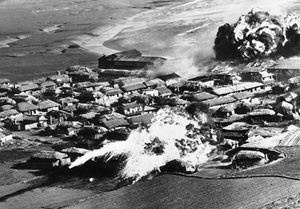
“Hit anything that moves,” US pilots were told. Here, thatched huts go up in flames after B-26 bombers unload napalm bombs on a village near Hanchon, North Korea, on May 10, 1951. © AP
Reflecting the ‘game theory’ paranoia of the time, the US elite misread the North’s invasion as a plot hatched in Moscow and Beijing to ‘test’ America’s new global strategy and ‘break out of containment’. Acheson was sure it was a ruse to distract from an imminent invasion of western Europe by Stalin. It wasn’t. It was just the Koreans wanting their country whole again – and foreigners’ influence gone from their peninsula.
In the summer of 1950, the North Koreans quickly overran nearly all of the South. The US raised a hue and cry, organized its first ‘UN coalition of the willing’, and countered with a combined force of over 1.7 million troops to defend the brutal regime of Syngman Rhee. They just as quickly pushed the North Koreans all the way back up the peninsula, past the 38th parallel, and approached the Chinese border. Despite being exhausted by decades of civil war and fighting the Japanese, 2 million Chinese troops – with a relatively small air force and no nuclear weapons – entered North Korea and pushed General Douglas MacArthur’s troops out of North Korea, returning the status quo of the north-south divide by 1951.
O’Neill explains what this first ‘war against communism’ did to North Korea:
What is scarcely acknowledged in the West was the devastation the Korean War wrought upon the North. The US-led UN Command dropped more bombs on the North than the US had dropped in the whole Pacific theatre in World War 2. This included the dropping of 20,000 tonnes of napalm, a particularly gruesome way of killing people. This method was later used to equally horrific effect in Vietnam.
We now also know that the US waged bacteriological warfare, building upon Japanese expertise garnered in their war on China and further developed by US scientists at Fort Detrick.
An estimated two million people, or 20% of the total population, were killed. The bombing flattened every city in the country. In addition, the bombing targeted irrigation dams on the Yalu River. The intention was to destroy the rice crop and thereby starve the population into submission. Only emergency assistance from, among others, the Soviet Union and China prevented widespread famine and death.
All 78 North Korean cities were leveled, along with thousands of villages. The US quite literally wiped ‘North Korea’ from the face of the Earth. Another estimate puts the loss of North Korean lives at one third of the population – so, about 3 million dead. So the Korean War was hell for Koreans, but for the US deep state, North Korea’s invasion of South Korea ‘confirmed’ to them that their policy of containing China was correct, and was the catalyst for transforming the US into a global empire. The Wise Men had powerful incentives to read the situation their way: if this was a global Communist plot to ‘break out of containment’, then both containment theory and practice were correct, justifying the reconfiguration of US military and industry to a permanent, global war-footing. Bradley continues:
The irrational fear of worldwide communism as a result of the Wise Men’s misunderstanding of a small Asian civil war persuaded Congress to dramatically increase funding for the military. Martin Walker wrote,
The first defense budget presented by President Truman after the war began was for $50 billion, the precise figure Acheson had hoped for. The US Army doubled, to over 3 million men. The number of Air Groups doubled to 95, and were deployed to new bases in Britain, Libya, Morocco and Saudi Arabia. Everything changed with Korea. American diplomacy, defense budgets and military reach exploded across the globe.
Bruce Cummings concludes,
The Korean War was the crisis that finally got the Japanese and West German economies growing strongly, and vastly stimulated the US economy. American defense industries hardly knew that Kim Il Sung would come along and save them either, but he inadvertently rescued a bunch of big-ticket projects. […]
The Korean conflict would transform the US into a very different country than it had ever been before: one with hundreds of permanent military bases abroad, a large standing army and a permanent national security state at home.
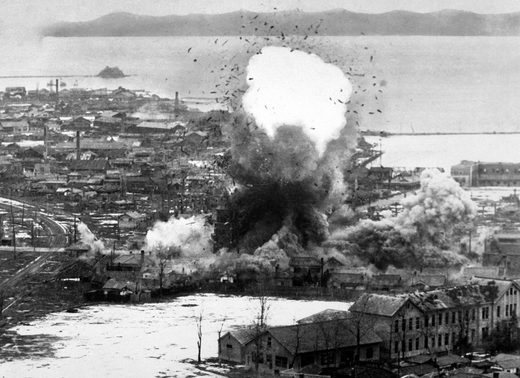
US Air Force bombers destroy warehouses and dock facilities in Wonsan, North Korea, 1951. © US Dept of Defense-USIA
Now we understand why North Korea distrusts the US so much. The message behind its apparent belligerence is simply: ‘Stay Away!’
On the other side of the Pacific, through the distortion field of US ‘strategic thinking’, you see why North Korea is the ‘gift that keeps on giving’: from their perspective, it’s the place that ‘made America great’.
Today’s situation, where a prosperous and westernized South Korea stands in stark contrast to an impoverished North, was exactly the reverse until relatively recently. ‘Communist’ North Korea rebuilt after the Korean war and was the economic success story. For all its secrecy, isolation, and ‘weird ways’, North Korea is still a pretty highly developed country.
It was only after South Korea removed its (actual) crazy Asian dictator in 1960 and became one of the ‘Asian Tiger’ economies by industrializing that foreign investment, development and ‘democratization’ took place in the South. In conjunction with later US-led international sanctions on the North, the Koreas’ trajectories switched directions. The South today does best according to all the indicators of economic orthodoxy, but there’s room for debate as to which population enjoys the better quality of life. The South may have wealthy elites and plenty of consumer goods, but it also has an overworked, stressed-out workforce, and based on numerous visitors’ testimonies in recent years, North Koreans’ love of country is substantially more genuine than ‘forced’.
On May 9th, South Koreans go to the polls. If you remember back during the battle between Trump and Clinton for the US presidency, massive rallies took place at that time against the South Korean president, Park, after it emerged that she had assembled some weird clique conducting ‘dark arts’ to chart her government’s course. Now Park has been impeached, triggering snap elections.
The upshot of the Park scandal last November and the current election campaign is that after 10 years of very pro-US rule in Seoul, the political climate in South Korea has swung back to seeking friendly neighborly relations with the North rather than continual antagonism. The leading contender for the leadership of South Korea is calling for the installation of THAAD to be delayed until after the election, which is why the US urgently wants it installed, before a new South Korean government can change its mind.
Others have written about the intrigues surrounding the installation of US missile systems in South Korea. The upshot of it is that it’s happening – with or without a liberal, pro-peace government in Seoul, and regardless of who pays for it. Just as everyone knows that US missile systems in eastern Europe to ‘defend Europe from Iran’ were actually there to ‘contain’ Russia, everyone knows that US missile systems in eastern Asia to ‘defend it from North Korea’ are actually there to ‘contain’ China.
It’s the same old 70-year-long US ‘Policy for Asia’. And, judging by China’s meteoric rise, it’s still not working, and isn’t ever going to work. But North Korea holds fond memories for the US ‘wise men’ of today, because their New World Order was born amid the charred corpses of millions of North Koreans.

A view of downtown Pyongyang, Korea’s 2,000-year-old capital, from across the River Taedong.
© dprk360.com / Aram Pan
_________________________________________________
 Niall Bradley has a background in political science and media consulting, and has been an editor and contributing writer at SOTT.net for 8 years. His articles are cross-posted on his personal blog, NiallBradley.net. Niall is co-host of the ‘Behind the Headlines’ radio show on the Sott Radio Network and co-authored Manufactured Terror: The Boston Marathon Bombings, Sandy Hook, Aurora Shooting and Other False-Flag Terror Attacks with Joe Quinn.
Niall Bradley has a background in political science and media consulting, and has been an editor and contributing writer at SOTT.net for 8 years. His articles are cross-posted on his personal blog, NiallBradley.net. Niall is co-host of the ‘Behind the Headlines’ radio show on the Sott Radio Network and co-authored Manufactured Terror: The Boston Marathon Bombings, Sandy Hook, Aurora Shooting and Other False-Flag Terror Attacks with Joe Quinn.
DISCLAIMER: The statements, views and opinions expressed in pieces republished here are solely those of the authors and do not necessarily represent those of TMS. In accordance with title 17 U.S.C. section 107, this material is distributed without profit to those who have expressed a prior interest in receiving the included information for research and educational purposes. TMS has no affiliation whatsoever with the originator of this article nor is TMS endorsed or sponsored by the originator. “GO TO ORIGINAL” links are provided as a convenience to our readers and allow for verification of authenticity. However, as originating pages are often updated by their originating host sites, the versions posted may not match the versions our readers view when clicking the “GO TO ORIGINAL” links. This site contains copyrighted material the use of which has not always been specifically authorized by the copyright owner. We are making such material available in our efforts to advance understanding of environmental, political, human rights, economic, democracy, scientific, and social justice issues, etc. We believe this constitutes a ‘fair use’ of any such copyrighted material as provided for in section 107 of the US Copyright Law. In accordance with Title 17 U.S.C. Section 107, the material on this site is distributed without profit to those who have expressed a prior interest in receiving the included information for research and educational purposes. For more information go to: http://www.law.cornell.edu/uscode/17/107.shtml. If you wish to use copyrighted material from this site for purposes of your own that go beyond ‘fair use’, you must obtain permission from the copyright owner.
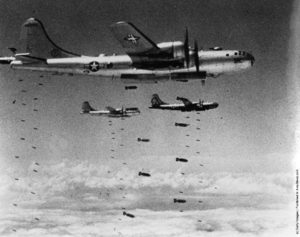
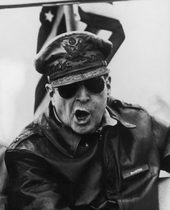
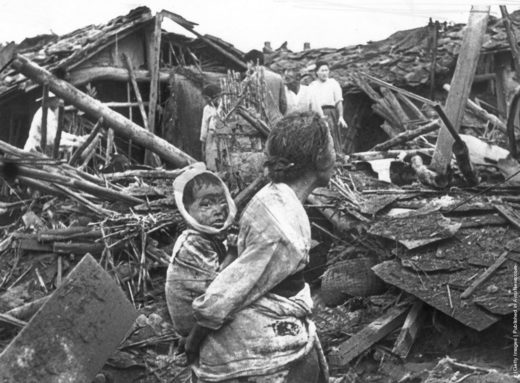
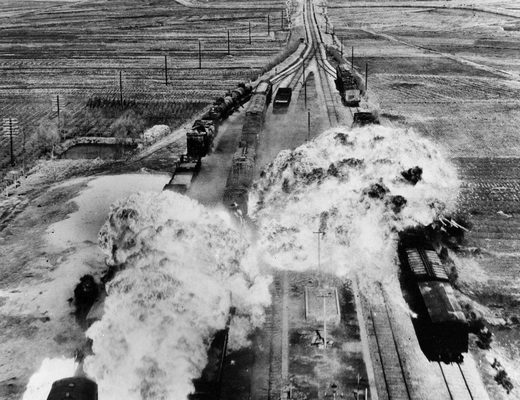
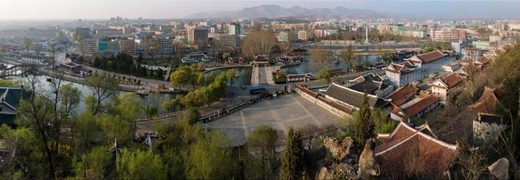
Niall Bradley writes an excellent article that captures the key reasons for resistance to US hegemony both in the South and North Korea. Well worth reading for those unfamiliar with Korean history.
“The South today does best according to all the indicators of economic orthodoxy, but there’s room for debate as to which population enjoys the better quality of life.”
You’ve got to be f**ing kiddin’? Whatever you may think and feel about South Korea, North Korea is the most controlled and unfree police state in the world today.
This moral relativism played out at its most extreme.